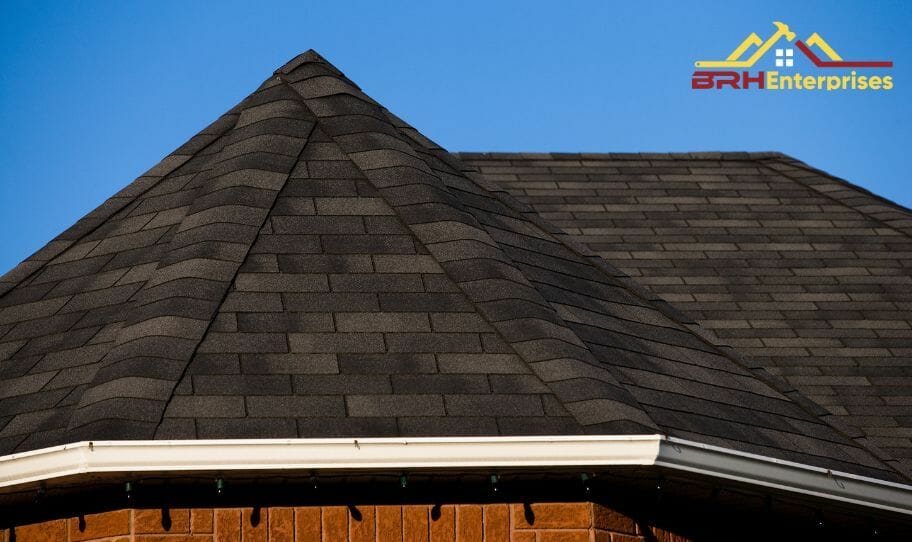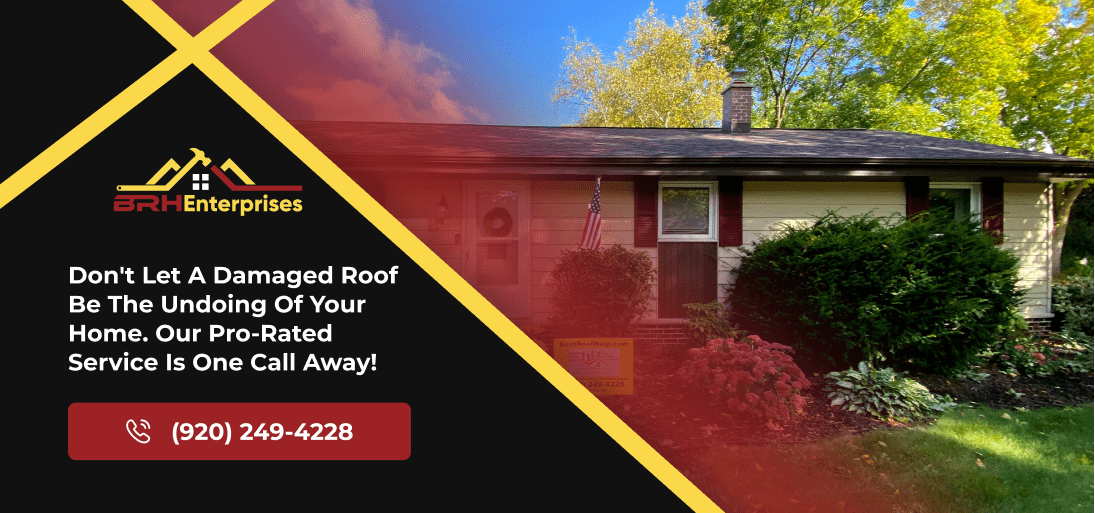How Roof Pitch Affects Your Home
Estimated Reading Time : 5 Min.

If you want to know how roof pitch affects your home, you are probably installing a new roof or replacing an old one. While a professional consultation from a roofing contractor is always best, we would suggest you do your research so you can discuss your needs and ask questions more confidently.
The right roof pitch ensures your home has a safe roof for a long time. This article explains all the ways in which the roof pitch affects your home, and it will help you choose the right pitch for your new roof.
According to our roofing experts at BRH Enterprises, most homeowners believe that the pitch and slope are the same. The truth is, you cannot use these terms interchangeably because they are not the same.
We will start by explaining roof pitch and how it differs from the slope.
Roof Pitch And Slope
The roof slope is the horizontal incline of the roof. It’s the length and steepness of the roof plane. On the other hand, roof pitch is the angle of the roof slope. It’s the ratio of vertical rise to horizontal run. You can measure a roof pitch by dividing the length of a roof slope by the height of the roof (the highest or top edge of the roof).
When you renovate your home or replace the damaged roof, the first step is to decide the pitch. Everything else will begin after that. That’s because roof pitch decides how strong, durable, and appealing your roof can be. It also affects the space and energy efficiency of your home.
Before learning how roof pitch affects your home, you must understand this: when you choose a pitch, it must follow your area’s building codes. The next part of this blog explains two kinds of pitches and which one may work best for your home.
Types of Roof Pitches
Some areas require minimum or low pitches, whereas others may need a high or steeper pitch. Choosing the correct pitch is essential to protect your home, and help maintain a comfortable setting during extreme weather conditions.
Low and High Pitch
A low pitch is shallow, and a high pitch means it’s more steep. Looking at roof pitch ratios, you will see significant variances, such as 4:12 or 12:12, and wonder what it means in terms of shallow and steep. The differences between low and high pitch are:
In the US, you can see roof pitches ranging from 2:12 to 12:12. As OSHA states, low-pitch roofs have a peak-to-slope ratio of less than 4:12 (around 18 degrees), which means that the peak of the roof isn’t higher than 4 inches. Any pitch above this measurement comes in the category of high-pitch roofs. They have a sharp angle with steep slopes and high peaks. Commonly, high-pitch roofs measure between 6:12 to 10:12.
Popular Roof Pitch In US Homes
An average US home has an area of about 2,000 square feet. You can see some beautiful and sturdy homes with varying roof pitches, but a few stand out. Here are the most popular choices among homeowners:
- 6:12: This is the standard pitch for most homes in the US. It’s great for maintenance because you can easily reach the gutters and look at the shingles. It also helps to prevent water and snow damage. Many homes have multiple peaks with different pitches.
- 2:12: This is the standard pitch for a ranch or split-level home. It’s also suitable for covering larger areas without adding extra height to your home. 2:12 is a good pitch for homes in hot climates where you don’t get many storms.
Roof Pitch Requirements By Building Code
If your town gets covered in snow during the winter, your area’s building code may have a minimum pitch requirement. That’s because high-pitch roofs are suitable for constantly handling heavy snow and rainfall. Steep pitches prevent ice, snow, and sleet from building up your roof. Otherwise, it may accumulate on a low-pitch roof and lead to leaks and water damage in your home. This can also damage the roof sheathing and your home’s foundation over time.
Roof pitch also affects the type of roofing materials because stone, tiles, and other heavy materials may not fit on some low-pitch roofs.
When replacing your roof, you must prefer a local roofing company with a good reputation and years of experience in your region. They would have proper licenses and local knowledge essential to build a safe, legal, and long-lasting roof that can also pass an insurance claim easily.
Now you should have a good idea about roof pitches, so we can move on and explain all the ways in which roof pitch affects your home.
How Roof Pitch Affects Your Home
Many homeowners may overlook a simple detail like the pitch of their roof, but it affects your home in ways you may not have imagined. It can affect the interior and exterior of your home, and a roof’s pitch plays a significant role in protecting your home, saving money, and enhancing curb appeal.
Control The Flow Of Elements
Roof pitch affects how well water and snow slide into the gutters. Roofs with high pitches control the flow of water and snow more efficiently. Pitches between 6:12 and 12/12 are excellent for homes in Mayville, WI. Everything will flow into the gutters quickly, making it important that you install the correct type of gutters too—for example, Big, K-style seamless gutters made of aluminum and protected by gutter guards to prevent blockages.
Low-pitch roofs may not do well in areas with heavy snow and rainfall. It will be challenging to handle all the snow that accumulates on it, as it may not slide down the roof on its own. Melting snow can often lead to leaks and moisture damage in your attic and rooms.
If you have lots of trees around the house, leaves and debris can easily fall on your roof. You must get a roof with a pitch that ensures everything falls down the roof and nothing sticks around the flashing, shingles, vents, soffit, etc. If something sticks in your roof components, it may stop functioning correctly, leading to moisture buildup in the attic, cracks on the roof, and leaks around the house.
Maintenance
If you live in an area that sees a lot of sunshine and little snow, a low roof pitch will be efficient for your home, as it is easy to maintain, and you don’t need to worry about water damage. They are also easy to install, so the overall cost of getting a low-pitch roof is typically less.
Handling High Winds
When winds blow above 30 mph, it can lift and tear the shingles. If this happens, a low pitch roof will be helpful. It also affects the roof’s edges to curl and break down. So for a tornado-prone region with average rainfall or snow, low-pitch roofs can be a great choice. On the other hand, high roof pitches put the shingles at a higher risk whenever a tornado or windstorm hits the area.
Economical
Pitched roofs are more resilient and durable than flat roofs. You will need to replace a flat roof after 20 years, but a pitched roof can last for a lifetime! For example, if you use architectural shingles or sturdy materials like slate and aluminum, your pitched roof can last between 40 to 100 years!
You can consult our roofing experts if you have questions about the correct roof pitch and the best materials to build your roof.
Free Consultation On Roof Pitch
We hope this article helps you understand roof pitches and how they can affect your home. If you want to learn about other roofing components, you may find our brief guide helpful.
BRH Enterprises is the most reliable and affordable roofing company in town, and we are proud to have helped thousands of homeowners improve their homes over the years.
If you have a home near Mayville, WI, call us at (920) 249-4228. We would be glad to offer you a free consultation where you can discuss all your roofing needs with the industry’s top experts.


